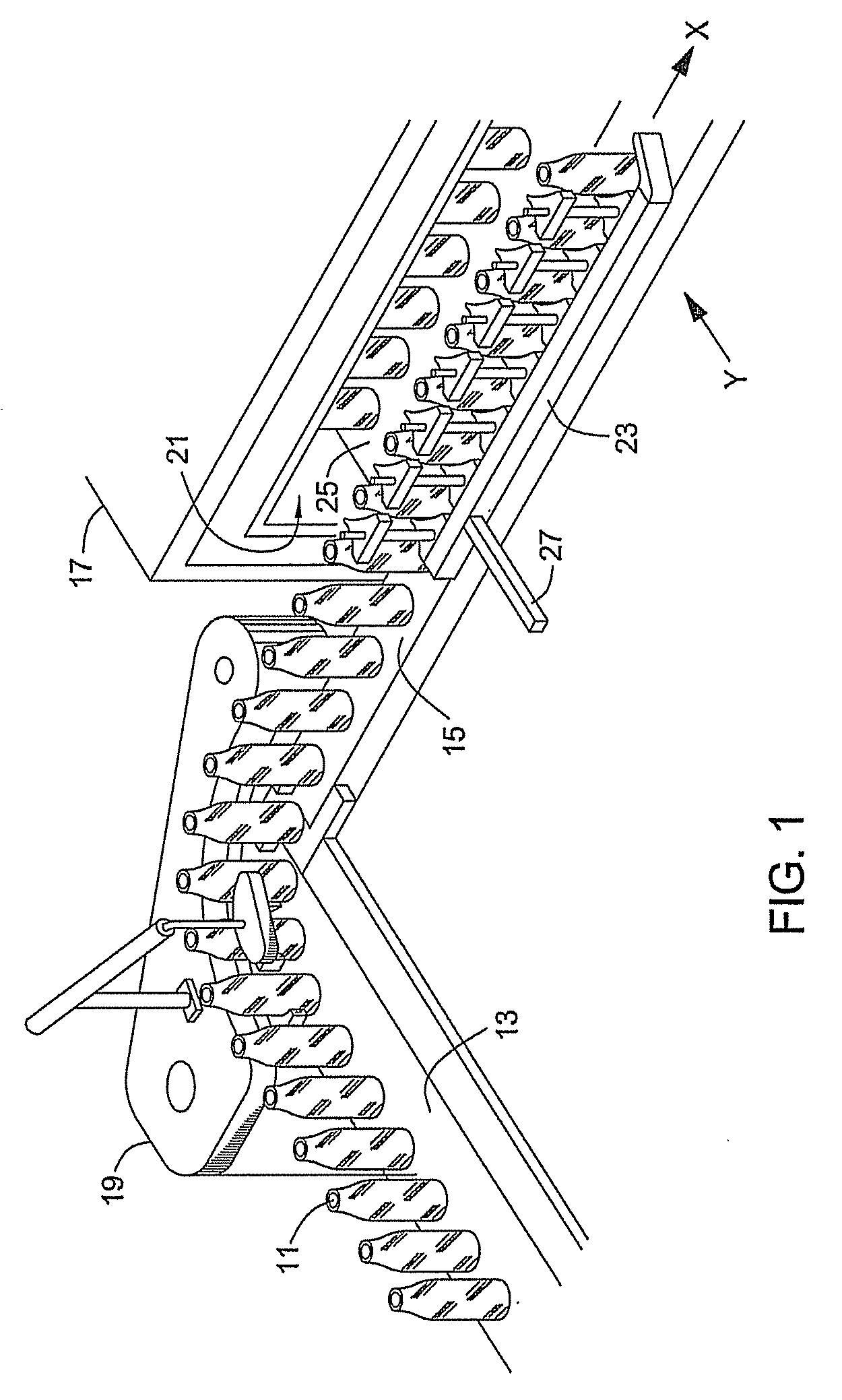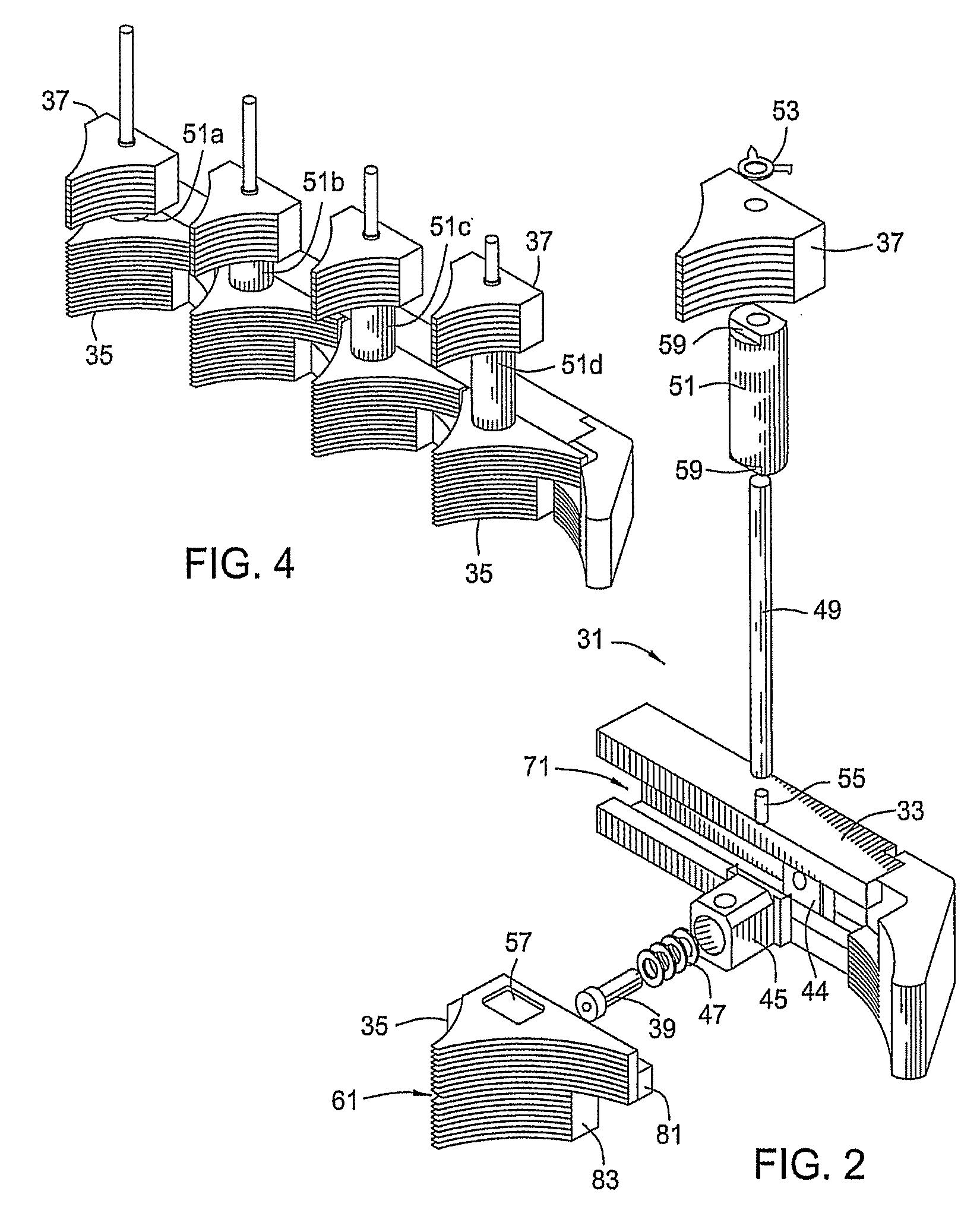System, method, and apparatus for adjustable stacker bar assembly having vertical accommodation features
a stacker bar and vertical housing technology, applied in glass rolling apparatus, glass tempering apparatus, manufacturing tools, etc., can solve the problems of thermal and/or physical damage, inability to the forming process steps may not fully remove the added stress concentration or riser and other defects, so as to prevent the damage to the components of the stacker bar assembly, prevent the breakage of workpieces, and be easily vertically movable
- Summary
- Abstract
- Description
- Claims
- Application Information
AI Technical Summary
Benefits of technology
Problems solved by technology
Method used
Image
Examples
Embodiment Construction
[0034] The present invention incorporates a number of features found in U.S. Pat. No. 5,741,343, which is incorporated herein by reference.
[0035] Referring to FIG. 1, a hot-end equipment portion of a prior art glass article manufacturing process is shown. Molding and mold transfer equipment is not shown for clarity. Molded hot-glass articles 11, such as bottles, are transferred by a single line conveyor 13 and a cross conveyor 15 toward an annealing furnace 17 that removes stresses produced during the glass molding process. In the configuration shown, hot glass articles 11 are transferred from the single line conveyor 13 to the cross conveyor 15 by a transfer unit 19 that may change the spacing between the hot glass articles 11. Near the oven entry port 21, a stacker push bar assembly 23 pushes a plurality of the hot glass articles 11 from the cross conveyor 15 to the multi-line conveyor 25 which moves the hot glass articles 11 through the furnace 17.
[0036] Various conventional pu...
PUM
| Property | Measurement | Unit |
|---|---|---|
| diameter | aaaaa | aaaaa |
| diameter | aaaaa | aaaaa |
| diameter | aaaaa | aaaaa |
Abstract
Description
Claims
Application Information
 Login to View More
Login to View More - R&D
- Intellectual Property
- Life Sciences
- Materials
- Tech Scout
- Unparalleled Data Quality
- Higher Quality Content
- 60% Fewer Hallucinations
Browse by: Latest US Patents, China's latest patents, Technical Efficacy Thesaurus, Application Domain, Technology Topic, Popular Technical Reports.
© 2025 PatSnap. All rights reserved.Legal|Privacy policy|Modern Slavery Act Transparency Statement|Sitemap|About US| Contact US: help@patsnap.com



